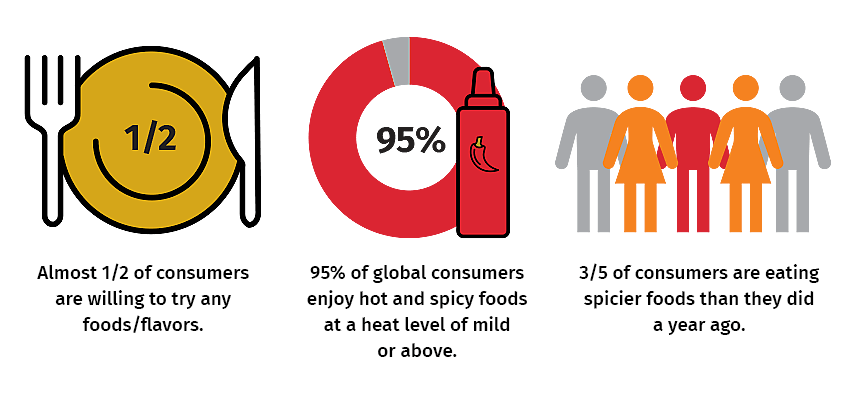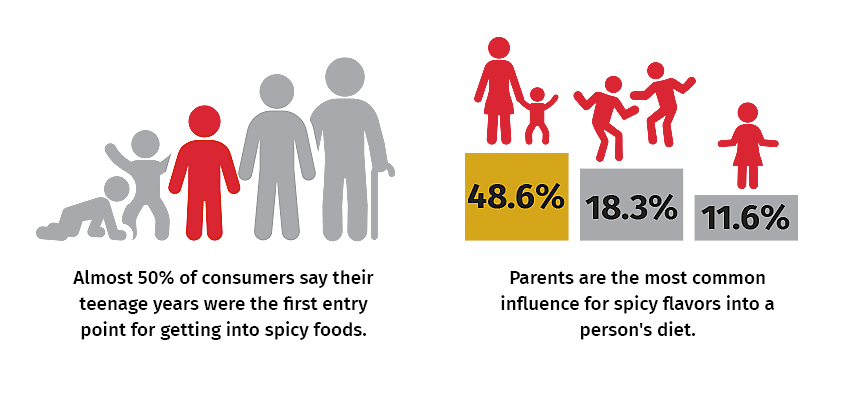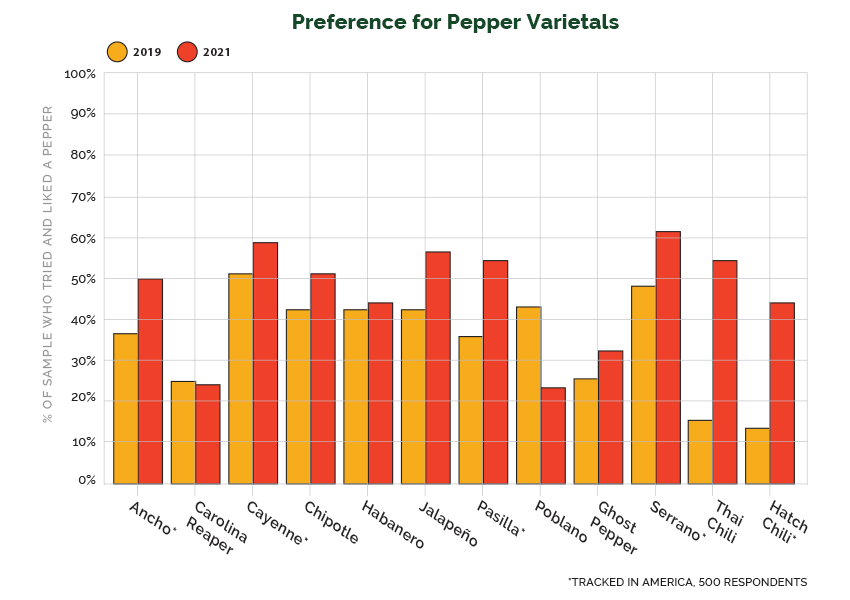
In 2019, Kalsec conducted a global study that dug far and wide into how people felt about heat and spice, covering everything from the number of people eating spicy food to the types of exact pepper varietals they prefer. Since then, it became the unofficial guidebook for developing hot new ideas. If you missed it, you should definitely check it out.
In 2021, we revisited our findings and ignited new research to see if anything changed. What we found is that while preferences for heat and spice have continued to gain traction several new nuances signify big opportunities for food and beverage managers. Take a look at some of our key findings.
The Temperature is Rising
Today, a whopping 95 percent of global consumers enjoy hot and spicy food at a heat level of mild or above, and 3 out of 5 consumers note they are eating spicier foods than they did just a year ago. That’s an increase of nearly 13 percent from 2019.

Where it Comes From Matters
The origin of that heat is just as important as the heat itself, with 56 percent of consumers saying that pepper varietals matter to them—over a 3.5 percent increase from 2019. This means choosing a natural source for your heat is now more important than ever.

Spark Cravings Early
A new piece of research highlights the age at which consumers first encounter spicy foods. At nearly 50 percent, most are introduced in their teenage years—and it’s not just kids doing ghost pepper challenges on TikTok. Parents are overwhelmingly responsible for introducing hot & spicy flavors at 48 percent.
This begs the question: how can we leverage this entry point and encourage more parents to introduce their teens to spicy flavors, creating more lifelong fans at an early age? The opportunities are plentiful in several categories, including snacks, condiments, sauces and ready-to-eat meals.

All Applications Apply
The leading applications consumers are apt to try include those that already have a selection of hot and spicy option. Sauces lead the way, followed by meat/poultry/fish, condiments, dips, snacks and soups. But a comparison in data from 2019 shows where some surprising opportunities lie.
Take non-alcoholic beverages, for example. While just over 10 percent of consumers are willing to try spice in N/A drinks, they represent a 124 percent increase from 2019, and alcoholic beverages aren’t far behind.

Preferences by Region
Of course top spicy flavors and type of peppers consumer prefer depends on their region. Check out which spicy flavors consumers tried and liked globally.
Preferred pepper types show a bit more variety with Jalapeño leading in the Americas and Thai Chili leading in the Asia Pacific and European Union.


What’s Hot And What’s Not
While heat keeps getting hotter, many of the flavor and pepper trends we saw emerging in 2019 have cooled down a bit. For example, the once popular Berbere, Sambal and Gochujang are declining, while Sriracha and Curry saw slight rises, and black pepper soared. On the pepper varietal front, poblanos, habaneros and Carolina reapers seem to be shrinking in popularity while Thai chilis, ghost peppers and pasillas are on the rise.
It’s natural that, over time, flavor and pepper preferences will fluctuate. But that doesn’t diminish the steadily increasing demand. We’ve covered just a few of the opportunities to seize the power of heat, but it’s only the beginning. We look forward to working with you to leverage these trends and more to help you ignite hot new ideas.
To learn more, download the results of our Hot & Spicy Foods survey.